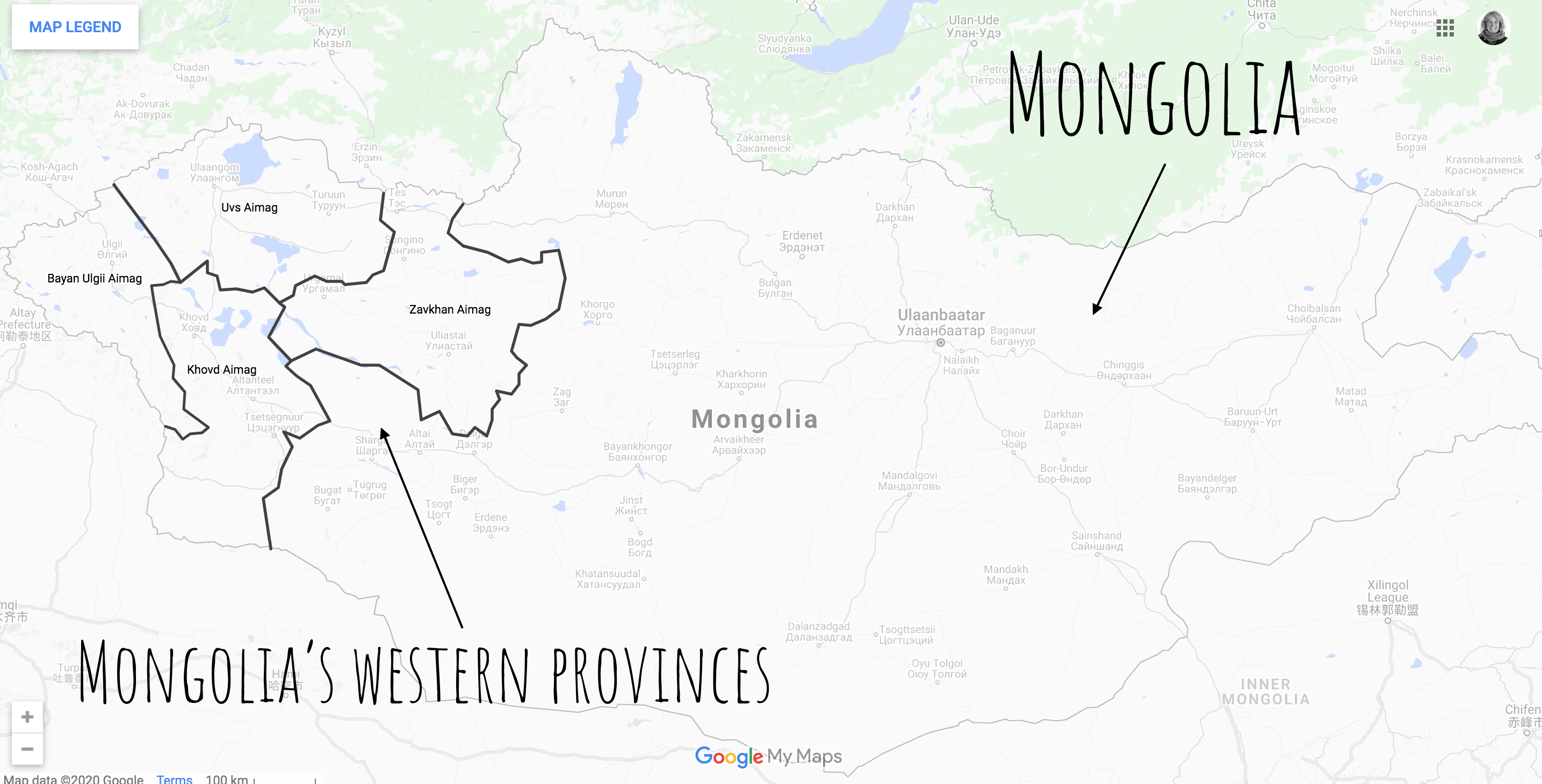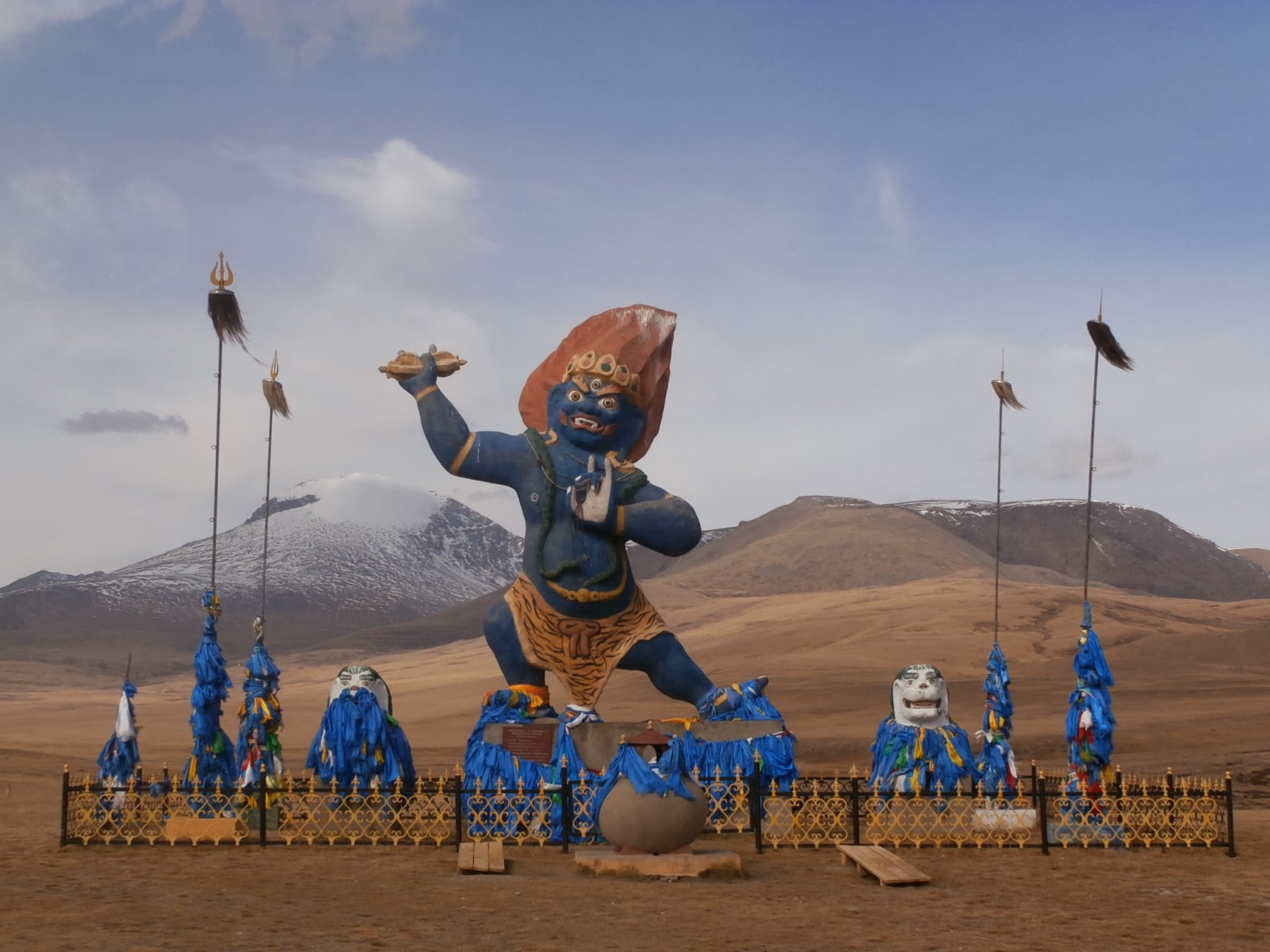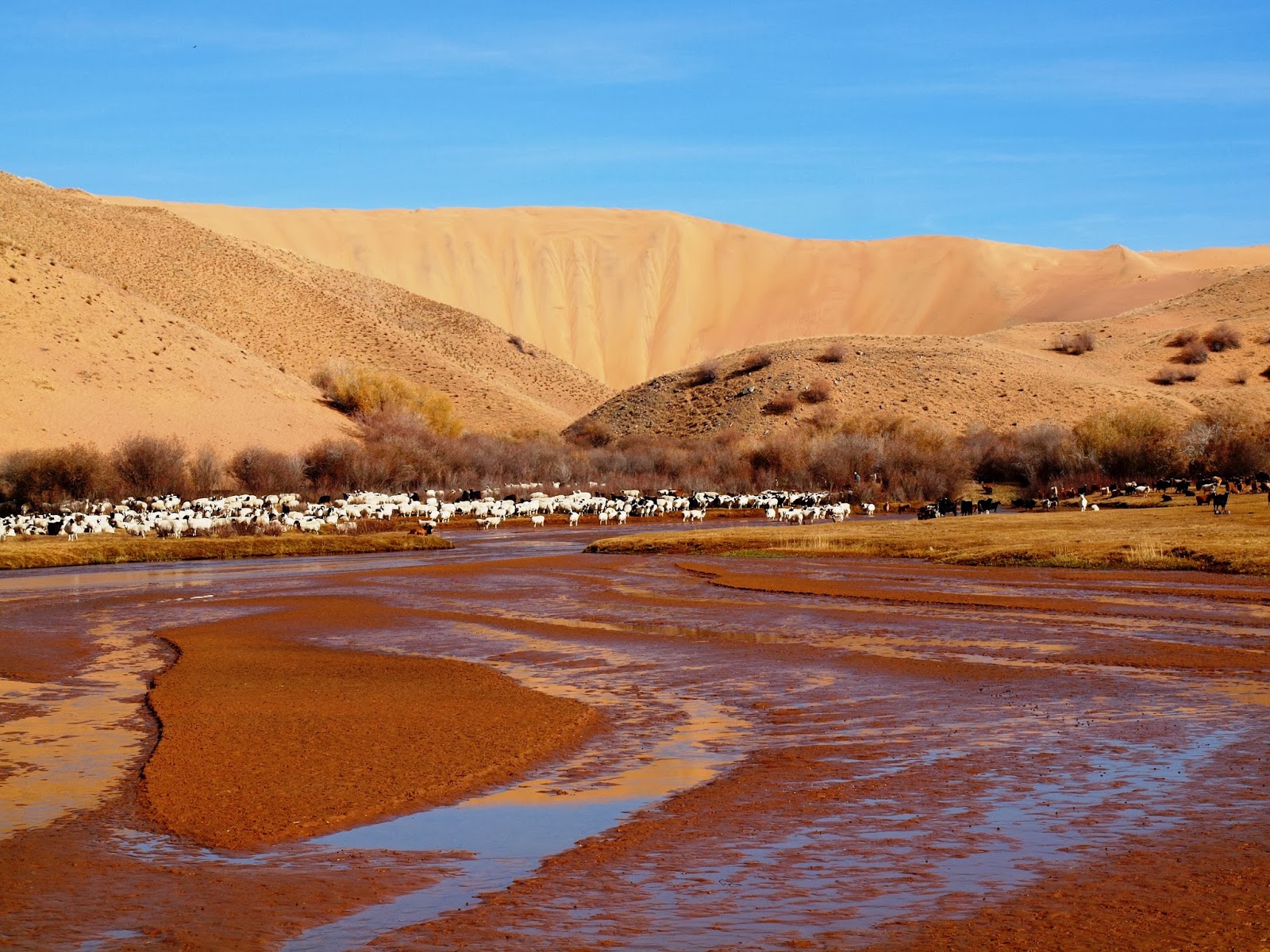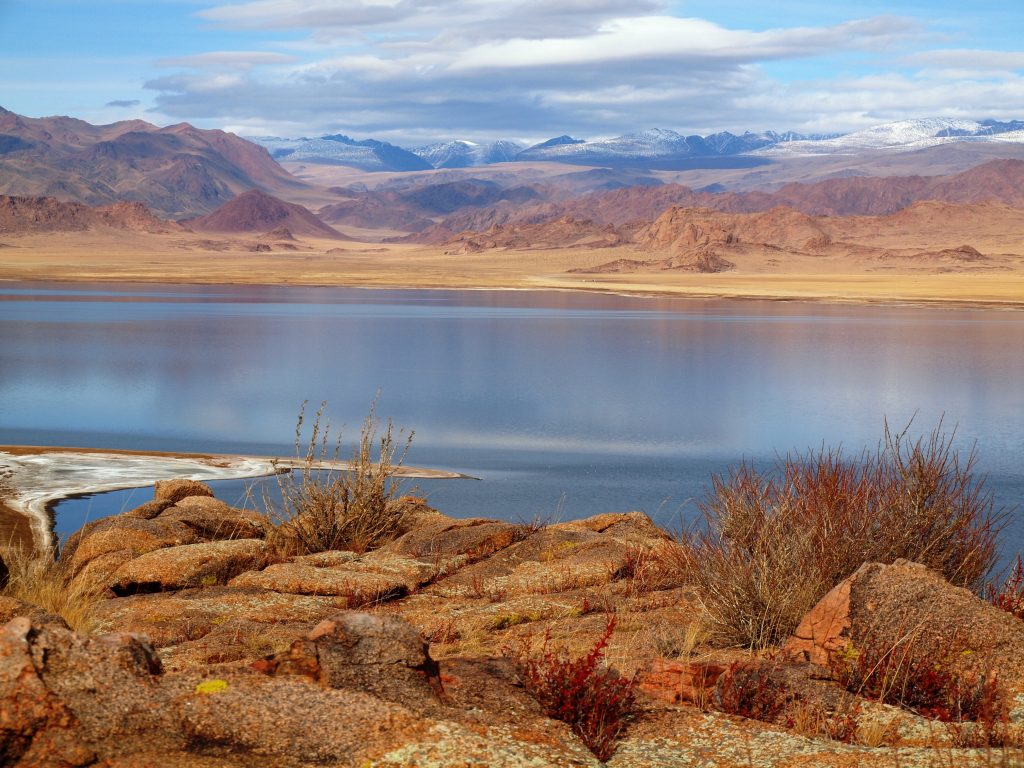Our Virtual Tour Of Western Mongolia
Western Mongolia is a glorious mix. As well as Mongolia’s highest mountains and its largest glacier, the region also has extensive sand dunes, great saltwater and freshwater lakes within the Great Lakes Basin and the largest reed beds in central Asia. It also has a rich culture with the provincial capital of Khovd being one of the most ethnically diverse in the country and Bayan Ölgii being home to a majority of Mongolia’s Kazakh population including eagle hunters that hunt from horseback with magnificent female golden eagles.
Four of Mongolia’s provinces cover eastern Mongolia – Zavkhan, Khovd, Bayan Ulgii, and Uvs.

“Each time I return I see constant changes alongside the things that never change. I love its paradoxes, its space and hospitality, its freedom and ancient customs. It’s a place of great roadless areas, all known and inhabited since prehistory. It is wild enough for great horned sheep; wolves, snow leopards and the last domesticated camels; with the lowest human population density on the earth…It is the home of Buddhist hunters and Muslims who toast their guests with vodka. I can’t get enough of it, and probably never will.’’ Stephen J Bodio, Eagle Dreams
An Introduction To Western Mongolia
Where To Visit In Western Mongolia?
The interactive map below is not the ultimate list but it shows some ideas based on 15 years of living and working in Mongolia and from our ongoing research. Traditionally, all journeys go in a clockwise direction in Mongolia, so this one does as well.
To Visit Otgon Tenger – The Abode of The Gods

Otgon Tenger is considered by many as the spiritual centre of Mongolia and its most sacred mountain. This is the highest mountain in the central Khangai Range – with its permanent snow-capped peak it is said to be 4021m. Mongolians consider the mountain to be the mystical abode of Ochirvan – the fierce, dark blue protective deity of the Buddhist religion (traditional Mongolian beliefs have held that wrathful deities inhabit many of Mongolia’s sacred mountains).
For Surprises
Khar Nuur is a freshwater lake surrounded by the Bor Khyarin dunes in Zavkhan Aimag. Zavkhan occupies a transitional zone between the Khangai Mountains and the Great Lakes Depression, and Khar Nuur is a combination of both these zones – an alpine lake surrounded by dunes, although this brief description does not do this remarkable region justice.

A visit to this region can be combined with the extraordinary views of Senjit Tsohio (rock formations at the top of a pass) and the Mukhartiin Gol (a river that flows out of the surrounding dunes). You’ll need a driver with local knowledge to find these locations.

To Explore Western Mongolia’s Lakes On A Roadtrip
The natural landscapes of western Mongolia form part of the immense Great Lakes Basin and this itself forms part of the Central Asian Internal Drainage Basin and the Altai Sayan Ecoregion (one of the Global 200 eco regions highlighted by the World Wide Fund for Nature). The region is a significant semi-arid depression that covers parts of Uvs, Khovd, Bayan-Ölgii, Zavkhan and it goes into parts of Gobi-Altai aimag. This region makes the ultimate road trip – travelling and camping through vast weathered landscapes. Just make sure to pack insect repellent.

What makes the region so unique is that it is rare to find such a variety of biological diversity (ecosystems include semi-desert, interconnected shallow lakes with wide reed belts, dunes, steppe grasslands, forests and mountains) in such proximity. This closeness of diversity is matched by few other places in the world. The richness and variety of the natural landscapes are preserved through international and national level protected area status – including Important Bird Areas (designated by Birdlife International), Ramsar wetland sites, nature reserves, national parks or strictly protected areas. The region provides a stepping stone for migrating birds between Siberia and the wintering ranges in China and South Asia, as well as being a valuable breeding and resting ground for a great variety of waterfowl and seabirds. The higher hinterland provides an important refuge for the globally endangered snow leopard, mountain sheep (argali) and the Siberian Ibex as well as numerous rodents. Many species found here are listed in the Mongolian and IUCN (the International Union for Conservation of Nature) Red Books.
To Experience Kazakh Hospitality

Hospitality is a key ingredient in the Kazakh culture. This is the incredible welcome table that typically awaits us at the home of the Kazakh families we stay with – as Kazakh culture dictates, they are warm and generous hosts.

To Meet Mongolia’s Kazakhs Including Eagle Hunters
Language and religion are two markers that make the Kazakhs of Mongolia culturally and ethnically different from Mongolians. Documented Kazakh migration to Mongolia begins between the 1840s-1860s when Kazakh nomads came to graze their livestock on the pastures during the summer months. Now, Mongolian Kazakhs have created a cross-border community, continuing to maintain social ties and kin relationships on both sides of the border. Kazakhs in Mongolia are considered citizens of Mongolia, and all have Mongolian passports.
A percentage of Mongolia’s Kazakh population are also eagle hunters. Hunting with eagles (berkutchi) is primarily a winter sport and a form of falconry traditionally found throughout the Eurasian steppe. Learn more here – https://www.eternal-landscapes.co.uk/hunting-with-eagles-mongolia/.

To Experience Nauryz
Whereas Mongolians celebrate Tsagaan Sar (White Month) – the Lunar New Year, Mongolia’s Kazakh population celebrate Nauryz. Nauryz translates into ‘new day’ – March 21 is officially recognized as International Nauryz Day, though the holiday itself is celebrated between March 19 and 22, depending on calendars and vernal equinox calculations. Nauryz is considered the first day of the spring equinox and is a celebration not only about spring but about renewal as well. Nauryz is not only a state holiday for Kazakhs in Mongolia, but it is also celebrated in all countries of Central Asia, as well as Georgia, India, Iran, China, Turkey and others. In 2009, Nauryz was included in the (bit of a mouthful) Representative List of the Intangible Cultural Heritage of Humanity by UNESCO. Learn more here – https://www.eternal-landscapes.co.uk/nauryz-festival-mongolia/
To Learn Kazakh Embroidery
Step inside a Kazakh yurt (ger) and one of your first impressions will be the warmth and colour of the woven carpets, textiles and embroidery work that decorate the interior. Notice the stitched, colourful felt carpets (shyrdak). Some gers will have reed panels (chii). Often made with wheat straw tied together and painted they are used mainly for decorative purpose as Kazakhs usually only use their gers during the warm summer months. And nearly every Kazakh yurt will be decorated with tus kiiz – wall hangings. These are often given as marriage gifts from a mother to her daughter. Each one is a unique creation. They often remain unfinished at the bottom as a symbol of the bride’s departure into a world of opportunity, and as an open invitation back to the family ger.

If you’re interested in experiencing western Mongolia with us once Mongolia is open to travel again after the coronavirus pandemic, look at our range of Mongolia tours and experiences for further inspiration.
Jess @ Eternal Landscapes







